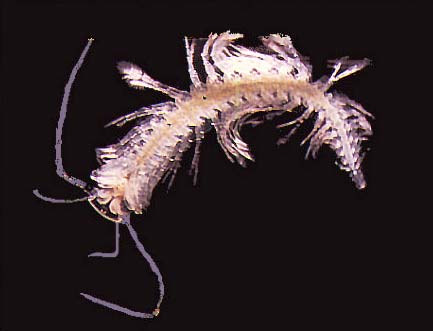850 Mostly Blind, Pale Creatures Discovered Underground

Down under in Australia, down underground, scientists have found 850 previously unknown species living in subterranean water, caves and micro-caverns.
These insects, crustaceans, spiders and worms are likely only about one-fifth of the number of undiscovered species the researchers think exist underground amid the harsh conditions of the Australian outback. Two species of blind fish and two of blind eels were also uncovered.
"What we've found is that you don't have to go searching in the depths of the ocean to discover new species of invertebrate animals — you just have to look in your own backyard," said researcher Andy Austin, an evolutionary biologist at the University of Adelaide in Australia. [Scientists say only a fraction of the species of plants and animals on the planet have been discovered.]
Only half of the species discovered have so far been named, the scientists announced today. Generically, the animals found in underground water are known as "stygofauna" and those from caves and micro-caverns are known as "troglofauna."
When it came to the water-dwelling stygofauna, small crustaceans dominated at about three-quarters percent of all species, then insects, all beetles, at roughly one-sixth, with other kinds of creatures making up the rest. For the cave-dwelling troglofauna, arachnids dominated at about one-half of all species, with insects at about one-quarter and crustaceans and others finishing the list.
"Virtually all are blind and completely lack eyes, and lack pigment, so they are pale or white in color," Austin told LiveScience. Often the species are quite delicate, he added, "and the insects in caves often have long legs and antennae — most sense vibration and use chemical senses, as they cannot see in the pitch black."
The scientists found these species during a comprehensive four-year survey of underground water and caves across arid and semi-arid Australia.
Get the world’s most fascinating discoveries delivered straight to your inbox.
Austin and his colleagues suggest these species hid underground long ago due to past climate change.
"Central and southern Australia was a much wetter place 15 million years ago when there was a flourishing diversity of invertebrate fauna living on the surface," Austin explained. "But the continent became drier, a process that last until about 1 to 2 million years ago, resulting in our current arid environment. Species took refuge in isolated favorable habitats, such as in underground waters and micro-caverns, where they survived and evolved in isolation from each other."
So far the surveys have examined only 10 percent of the areas that likely have stygo- and troglofauna, Austin said. They now want to drastically expand their geographical coverage, as well as perform more genetic work to dissect when these creatures diverged from their brethren and see how this matches up with climate change and other geological events.
Although this new discovery is exciting scientifically, it also poses a number of challenges for the conservation of these species, as many of them are located in very remote areas of Australia, where there is significant ranching and mining that could potentially impact their survival.
"This said, it has been environmental monitoring by and support from mining companies that has helped with these discoveries," Austin noted.
The scientists detailed its findings at a scientific conference on evolution and biodiversity in Darwin, Australia, which celebrated the 200th anniversary of Charles Darwin and finished Sept. 28.
- Gallery: Freaky Fish
- Top 10 Scariest Sea Creatures
- Gallery of Wild Sharks



